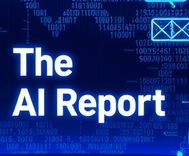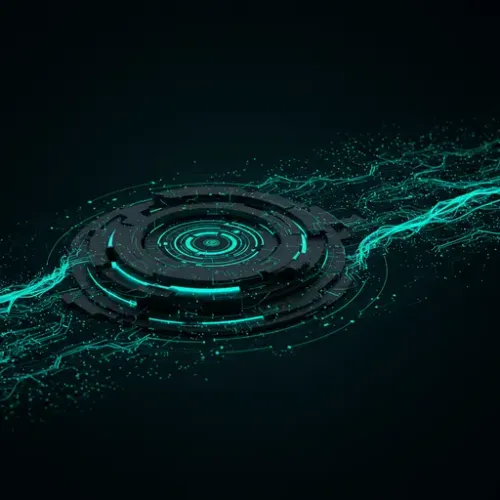Indigenous knowledge meets artificial intelligence

The AI Report
Daily AI, ML, LLM and agents news
In an era increasingly defined by artificial intelligence and data, a profound shift is underway, spearheaded by contemporary Native artists. Far from being separate from technology, these artists are reimagining its very essence, drawing on Indigenous knowledge systems that challenge the prevailing Western paradigms of intelligence, interaction, and data ownership. They posit that true innovation emerges not from extraction, but from relationships, consent, and reciprocal exchange.
Beyond Western Concepts: Technology as Relationship
For many Native American cultures, the concept of "art" as a distinct object doesn't exist. Instead, terms often convey action, intention, ceremony, or deep reflection. In Lakota, for instance, "wówačhiŋtȟaŋka" signifies profound thought, while "wóčhekiye" suggests offering. This perspective reveals technology not merely as a tool or a commodity, but as a carrier of knowledge, a performer of responsibility, and an intrinsic part of life itself. It's a living system, constantly moving, teaching, and connecting through use—a radical counterpoint to the tech industry's often impersonal and extractive assumptions.
A new vanguard of artists—Suzanne Kite (Oglala Lakota), Raven Chacon (Diné), and Nicholas Galanin (Tlingít)—are embodying this philosophy. Their work is a powerful rejection of the extractive data models prevalent today. Instead, they champion systems built on mutual respect, consent, and relationship. These innovators don't seek to be merely included in existing tech structures; they are actively building the blueprint for what should come next.
Suzanne Kite: Crafting Consent in AI
Suzanne Kite's AI art installations serve as compelling prototypes for a Lakota framework of data sovereignty. Her work demonstrates that intelligence can emerge only through reciprocal, consensual interaction. Unlike many commercial systems that assume user consent through obscure terms of service, Kite’s kinetic machines demand the viewer's physical presence, and crucially, they offer something meaningful in return.
As Kite herself states, "It's my data. It's my training set. I know exactly what I did to train it. It's not a large model but a small and intimate one." This approach highlights a vital principle: the power of small, transparent, and ethically sourced datasets over vast, indiscriminately gathered ones. Her installations, such as "Wičhíŋčala Šakówiŋ (Seven Little Girls)," translate her body movements into machine-learning algorithms, generating audio responses. Another piece, "Ínyan Iyé (Telling Rock)," uses embedded AI to speak and respond to viewers, fostering a "more-than-human intelligence" rooted in the fundamental Indigenous principle of reciprocity—that all relationships involve mutual exchange and responsibility. This offers a powerful model for developing AI that respects agency and interaction.
Raven Chacon: Unearthing History Through Sound
Raven Chacon explores how sound, robotics, and performance can directly confront the logic of automation, surveillance, and extraction. His Pulitzer Prize–winning musical composition, "Voiceless Mass," exemplifies this. Premiering in a cathedral, the piece generates "sounds the building can hear"—electronic frequencies that exploit the acoustics to create spectral voices, giving presence to historical absence. Each site-specific performance is recorded, generating material that mirrors how sensor networks log presence, but critically, only with explicit consent. Chacon's work reminds us that technology can be a medium for reclaiming narratives and ensuring that presence, whether human or historical, is acknowledged and respected.
Nicholas Galanin: Memory, Mechanics, and Modernity
Nicholas Galanin’s installations provocatively stage a conflict between machine motion and human memory, probing the implications when culture is performed without a consenting body. His mechanical drum installation, "Aáni yéi xat duwasáakw (I am called Land)," features a traditional Tlingit box drum, traditionally imbued with sonic memory and social function, now struck by a mechanical arm. The unfaltering, heartbeat-like rhythm creates a tension between automation and ancestry, serving as a stark warning about the risks of technology detached from cultural context and human agency.
Galanin also uses his work to indict settler sabotage of Native technology and culture. His bronze sculpture, "I think it goes like this (pick yourself up)," cast from deconstructed faux totem blocks, underscores the function of traditional Tlingit totem poles as sophisticated information systems, encoding history, mythology, and family. Unlike fleeting digital records, these enduring carvings represent a profound commitment to durable, culturally embedded knowledge. This challenges us to consider what truly constitutes "data" and how it should be preserved and transmitted responsibly.
The Radical Imperative: Rethinking Intelligence and Default Settings
The false binaries foundational to much Western innovation—human vs. machine, nature vs. technology—are inherently challenged by these artists. Native peoples have always been intimately connected to technology; their land, labor, and lifeways built significant portions of America's infrastructure. The real question isn't whether Indigenous cultures are contributing now, but why they were ever considered separate in the first place.
These artists pose truly radical questions for the future of technology: What if intelligence couldn’t be gathered until a relationship had been established? What if the default setting for any technological interaction was refusal, rather than implicit extraction? Their work is not merely a critique; it is an active construction of alternative futures, demonstrating that technology can be designed with inherent ethical frameworks, fostering genuine connection and respect rather than exploitation. Their vision offers a compelling pathway for creating technology that is truly intelligent, deeply human, and fundamentally reciprocal.

The AI Report
Author bio: Daily AI, ML, LLM and agents news
